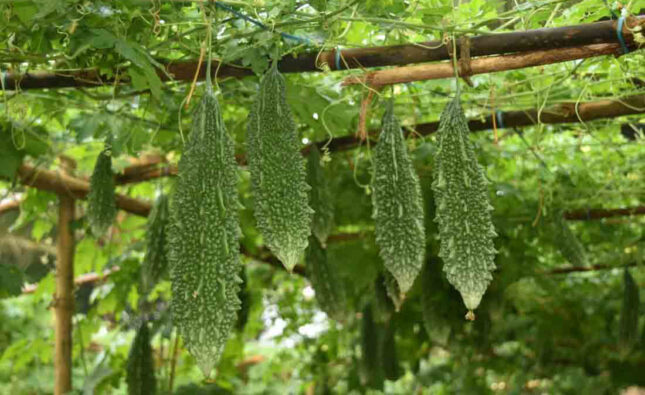Hydroponics farming is a soil-less cultivation method that involves growing plants in a nutrient-rich water solution instead of traditional soil-based methods. In hydroponics, plants receive all the essential nutrients they need directly from the water, which is carefully balanced to meet their requirements.
The key components of hydroponics farming include:
1. Growing medium:
Instead of soil, hydroponic systems use a neutral growing medium to support plant roots. Common examples include perlite, vermiculite, coconut coir, and rockwool. The growing medium provides stability to the plants while allowing roots to access water and nutrients.
2. Nutrient solution:
The nutrient solution is a mixture of water and mineral nutrients necessary for plant growth. It typically contains a balanced blend of macronutrients (nitrogen, phosphorus, potassium) and micronutrients (iron, manganese, zinc, etc.). The solution is carefully monitored and adjusted to maintain optimal nutrient levels.
3. Water and oxygen supply:
Hydroponics systems circulate the nutrient solution, ensuring a constant supply of water and nutrients to the plant roots. Adequate oxygenation is also crucial for root health, achieved through techniques such as aeroponics or the use of air stones.
4. pH and EC control:
pH refers to the acidity or alkalinity of the nutrient solution, while EC (electrical conductivity) measures its nutrient concentration. Maintaining the appropriate pH level (typically between 5.5 and 6.5) and EC value ensures optimal nutrient uptake by the plants.
There are different types of hydroponic systems, including:
-
Deep water culture (DWC):
Plants are suspended in the nutrient solution, with the roots submerged and continuously oxygenated.
-
Nutrient film technique (NFT):
A thin film of nutrient solution flows over the roots, allowing them to absorb nutrients while being exposed to air.
-
Ebb and flow (flood and drain):
Plants are periodically flooded with the nutrient solution and then drained to provide aeration.
-
Drip irrigation:
The nutrient solution is delivered to the plants through drip emitters, providing a controlled and precise supply.
Benefits of hydroponics farming include:
1. Water efficiency:
Hydroponics systems use significantly less water compared to traditional soil-based agriculture, as water is recirculated in closed systems. This makes it particularly suitable for regions with water scarcity.
2. Nutrient control:
Hydroponics allows precise control over nutrient levels, ensuring plants receive optimal nutrition for maximum growth and yield. It eliminates the risk of nutrient imbalances or deficiencies.
3. Space efficiency:
Hydroponics systems can be designed vertically or in compact setups, enabling high-density cultivation in limited spaces. This makes it suitable for urban farming and maximizing land utilization.
4. Reduced reliance on pesticides:
Hydroponics reduces the risk of soil-borne pests and diseases, leading to a decreased need for chemical pesticides.
5. Year-round cultivation:
Hydroponics systems can be operated indoors or in controlled environments, allowing year-round production regardless of external climate conditions. Hydroponics farming has gained popularity due to its efficient resource utilization, high yields, and potential for sustainable agriculture. It is used for various crops, including leafy greens, herbs, strawberries, tomatoes, and cucumbers.
Future of Hydroponics
The future of hydroponics looks promising and is expected to play a significant role in sustainable agriculture and food production. Here are a few potential developments and trends that could shape the future of hydroponics:
1. Advancements in technology:
As technology continues to evolve, we can expect to see more sophisticated and automated hydroponic systems. This could include the integration of sensors, artificial intelligence, and robotics to monitor and optimize plant growth, nutrient delivery, and environmental conditions. Smart systems may be able to adjust lighting, temperature, humidity, and nutrient levels based on real-time data, resulting in even higher yields and resource efficiency.
2. Vertical farming:
Vertical farming, which involves growing plants in vertically stacked layers or structures, is gaining momentum in urban areas with limited space. Hydroponics is particularly well-suited for vertical farming as it allows for efficient use of space and resources. In the future, we may see more vertical farms integrated into buildings and urban environments, providing locally grown produce and reducing the carbon footprint associated with transportation.
3. Integration of renewable energy:
To enhance sustainability, hydroponic systems could increasingly rely on renewable energy sources such as solar power or wind energy. Integrating renewable energy can reduce the environmental impact of hydroponics and make it even more sustainable and cost-effective.
4. Customized nutrient formulations:
Research into plant nutrition and the specific nutrient requirements of different crops is ongoing. In the future, we may see the development of customized nutrient formulations tailored to specific plant varieties and growth stages. This could result in improved plant health, increased nutrient uptake efficiency, and optimized crop yields.
5. Integration with other agricultural practices:
Hydroponics can be combined with other agricultural practices such as aquaponics, where fish waste provides nutrients for plants, creating a symbiotic relationship. Such integrated systems can further enhance resource utilization and create more sustainable and self-sufficient food production systems.
6. Expansion in controlled environment agriculture:
Controlled environment agriculture, including hydroponics, is gaining attention as a means to produce food in regions with unfavorable climates or limited arable land. As the global population continues to grow, controlled environment agriculture can help ensure a consistent and reliable food supply, irrespective of external weather conditions or geographic limitations.
Overall, the future of hydroponics holds great potential for increased efficiency, sustainability, and food production. Continued research, technological advancements, and innovative approaches will likely drive the adoption and development of hydroponic systems in the years to come.






